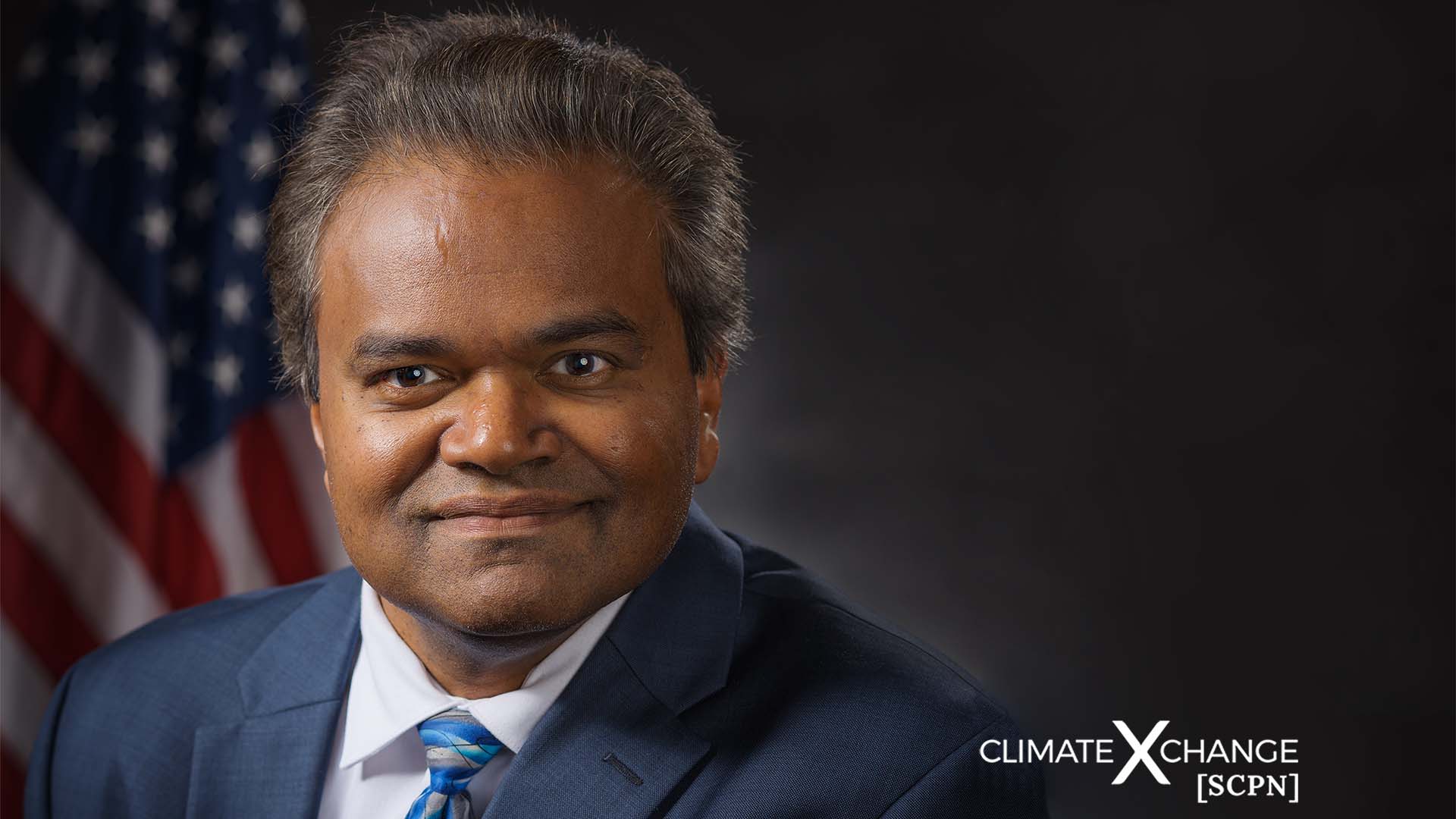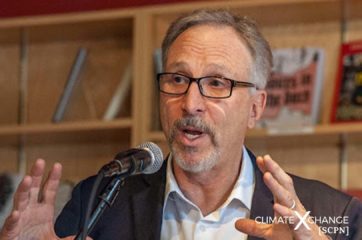All across the country, members of our State Climate Policy Network (SCPN) are fighting to make an impact on climate change in their communities. We have individuals in our Network from all 50 states, each experiencing climate change differently in their local areas and finding unique solutions to build resiliency efforts.
Mathy Stanislaus is a former Obama Administration official in the Environmental Protection Agency and is currently the Interim Director of the Global Battery Alliance. Stanislaus has experience in the private, public and non-governmental sectors and his background in science and law give him a well rounded perspective on energy storage policy.
This interview has been edited for brevity and clarity.
Greg Casto: Can you briefly describe the Global Battery Alliance and what your role is at the organization?
Mathy Stanislaus: The Global Battery Alliance (GBA) is a group of private and public sector members. On the private sector side, there are companies in the entire battery value chain — including mining, minerals processing, battery and electric vehicle (EV) manufacturers, as well as general technology companies. On the public side, we have a number of governments, for example, the German Ministry of Economic Affairs and Energy, the Canadian government, the Democratic Republic of Congo, and a number of U.N. agencies. We also consult with the European Commission to align their climate and battery regulation. We’ve begun doing a series of consultations with the Biden administration around the battery supply chain executive order.
The other very important segment of our membership are civil society organizations. We have a number of civil society organizations representing everything from the far upstream in terms of mining human rights for labor. We have a number of organizations focusing on scaling up mobility and renewable energy. GBA’s vision is to drive a sustainable battery value chain which will do a number of things: (1) reduce greenhouse gases in the transportation energy sector by 30 percent toward the Paris goals, and (2) reduce the manufacturing footprint of batteries by 50 percent.
Greg Casto: What is a battery value chain?
Mathy Stanislaus: The battery value chain basically includes companies who produce or secure a material, product, or a sub-product that ultimately sums up into a battery. Whether it’s for electric vehicles, or a battery to store energy off the grid.
Greg Casto: Why are batteries and energy storage an important concept to focus on?
Mathy Stanislaus: Unless we address the costs of batteries in mobility, you’re really not going to scale up electric vehicles in the way that we want. While subsidies can play a role, the price of large batteries is the major cost of an electric vehicle — it’s around 60 percent of the overall vehicle cost. You also need to deal with the underlying fundamentals of making sure that the scale up of mobility occurs long-term, which means reducing the cost.
Separately, without energy storage, you’re really not going to deploy renewable energy to scale — energy that is available when needed, not just available when it’s produced. Energy storage enables electricity that’s produced through renewables to be stored when needed. Only with that do you begin displacing fossil fuel-based energy. You really cannot shift the proportion of energy that’s on the grid from coal and oil to renewables without energy storage.
Greg Casto: The GBA emphasizes the need for a circular battery value chain. What does this mean?
Mathy Stanislaus: It’s an alternative to the historic economic paradigm where you acquire materials, you manufacture materials, and you throw those materials away. In a circular economy, you build in the idea of recovering materials to extend their useful life. A battery used in an electric vehicle becomes unusable with about 75 percent remaining energy capacity, but you still have 75 percent storage capacity. We’re looking at how to repurpose that battery for storage operations on and off the grid. That’s an example of a circular application.
Greg Casto: Have we seen countries or industries moving towards a circular economy? What level of success have they had?
Mathy Stanislaus: One of the most concrete examples is probably remanufacturing. Aluminum is a great example of circularity. Given the nature of its chemistry, aluminum really lends itself to almost infinite reuse into new products. Circularity is still very much in its early stages because the associated policies and financing, as well as the design issues, are still not well integrated. One of the biggest examples of a circular economy is in Europe, which has a comprehensive circular economy plan, and it identifies a number of sectors. One of the things they’re looking at is to give the market a nudge by requiring some disclosure of recycled content and which products perform over a longer life. There are examples in China, Italy, and France where they are reducing the tax basis of products that use recycled materials that remanufactured materials to give them a competitive advantage.
Greg Casto: You’ve written about the need to incorporate circular economies into national climate plans. Why is this necessary?
Mathy Stanislaus: Well, there are a number of factors that go into that. One is the huge explosion of materials to drive the economy. The Organisation for Economic Co-operation and Development (OECD) projected we will have to double the consumption of raw materials to maintain the current level of economic productivity by 2050. Associated with that are the consequences of emitting greenhouse gases.
There is an international group of multiple countries that studied products in the U.S., Germany, and Brazil to look at the opportunity for remanufacturing. They concluded that a real focus on remanufacturing can reduce raw materials by 80–99 percent as well as reduce greenhouse gas emissions by 79–99 percent. Reintegrating product quality materials can reduce greenhouse gas emissions for reintegrated aluminum (96 percent), steel (86 percent), and plastics (37 percent). While I think regulatory requirements are important, the biggest driver of climate emissions are products — and raw materials are the essence of those products.
Greg Casto: What does that circular repurposing of materials look like in practice?
Mathy Stanislaus: I would suggest focusing on the products and materials with the highest opportunity for greenhouse gas reduction. I believe that the U.S. should have a comprehensive remanufacturing strategy. Currently, only 2 percent of the country’s manufacturing Gross Domestic Product (GDP) comes from remanufacturing. That’s a huge missed opportunity to link climate and the economy. Design and repurposing of products and materials is a second method that I would include. The third tier is to really focus on quality recycling. For example, I made recommendations to the Department of Energy to create a best practice mechanism for cathode recycling, which currently doesn’t exist right now. That will do a couple of things: it’ll promote some domestic economic activity and it will also link with the key sectors of mobility and energy. That is key to climate change in the U.S.
Greg Casto: The Department of Energy recently announced policy actions to scale up domestic production and deployment of advanced batteries. The policies include strengthening manufacturing requirements funded by federal grants, developing a supply chain blueprint, and financing the EV battery supply chain. Do you think that these policies are sufficient? How do they compare to things that are being implemented in places like Europe and China?
Mathy Stanislaus: I think it’s a good starting blueprint. Europe has had circular economy policies going back about ten years or so. I also think that blended finance is really important because not all can be driven by the private sector. There have to be some public sector nudges to help in areas that require some propping up. For example, propping up smart charging to the grid is a really important investment. But I think that the details of advancing aspects of battery production in the U.S. still needs to be done.
I will segue into the major thing we’re working on at the GBA. We’re creating a global digital platform to assess the greenhouse gas footprint of the battery value chain. In addition, we want to address the provenance of battery materials to make sure the producers of those materials don’t violate human rights conditions. I believe that there needs to be a global recognition and global harmonization of the rules surrounding data. The European Commission has proposed a greenhouse gas footprint requirement. We are working with them and with others to create a greenhouse gas standardization mechanism to be able to standardize our companies to demonstrate the greenhouse gas footprint of a product. You will only be able to identify greenhouse gas hotspots of a value chain by having authenticated data.
Greg Casto: So basically, you want to highlight the importance of data in general and ensure that the data you are viewing is accurate and complete. Then, your data tracing system for the battery supply chain could be used to identify areas in the chain that are producing the most emissions and be able to focus on those hotspots. Is that correct?
Mathy Stanislaus: Yes, we want to establish attribute rules in working with policymakers, essentially asking, ‘what are your greenhouse gas targets?’ We then consider how to establish the data rules in terms of ‘can we trust this data? Can we trust that the data is not changing over time?’ Then, based on those rules, we can provide the assurance and do comparative analysis on the battery value chain and disclose where there are hotspots. We can determine the relative performance of batteries so that downstream companies can select suppliers that have lower greenhouse gas footprints than others.
Greg Casto: Are there ways that people can get involved with helping to improve this advanced system from an individual level?
Mathy Stanislaus: There are always individual choices that people can make. You can choose an electric vehicle or a plug-in hybrid over a combustion engine. I think if anyone buys renewable energy, they should always buy a battery — a fixed battery — at their home. I wish that there were more linkages between renewables and energy storage. That’s the best way to maximize the investment and reduce the cost of actually owning renewable energy equipment.
Greg Casto: You mean, for example, people that have off-grid solar at their homes?
Mathy Stanislaus: Exactly. I think of looking at consumers as a community of influence. Having been in the rough and tumble political world, I would push for disclosure of the greenhouse gas footprint and the sourcing of all of your products. I honestly think that is what changed the tide in Europe. And then people saw that the carbon footprint of one product compared to the next was significantly different. I think just pushing for more disclosure of the greenhouse gas footprint, as well as the human rights of responsible sourcing, would be a great first step.









